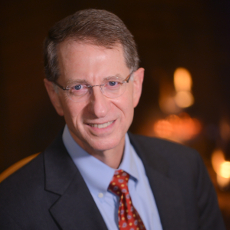 Recently, I had the pleasure of giving a series of lectures on asthma topics in several respiratory hospitals and at the Sichuan Medical Association meeting in China. It was a great opportunity to spend time in a country that is rivaling the U.S. in economic growth and to get an idea about the health care of patients with respiratory conditions in this country. These maladies make up a large percentage of chronic disease in China, especially as related to the high incidence of smoking in the population (believed to be greater than 30%), and the increasing issue of air pollution in the major cities. In a visit to Shanghai Pulmonary Hospital, the largest pulmonary hospital in Asia, with over 1,000 beds, I toured the Laboratory Functions Labs in the outpatient center. They perform over 300 different function studies daily, including body plethysmography, impulse oscillometry, and FeNO. The patient volumes are truly staggering.
Recently, I had the pleasure of giving a series of lectures on asthma topics in several respiratory hospitals and at the Sichuan Medical Association meeting in China. It was a great opportunity to spend time in a country that is rivaling the U.S. in economic growth and to get an idea about the health care of patients with respiratory conditions in this country. These maladies make up a large percentage of chronic disease in China, especially as related to the high incidence of smoking in the population (believed to be greater than 30%), and the increasing issue of air pollution in the major cities. In a visit to Shanghai Pulmonary Hospital, the largest pulmonary hospital in Asia, with over 1,000 beds, I toured the Laboratory Functions Labs in the outpatient center. They perform over 300 different function studies daily, including body plethysmography, impulse oscillometry, and FeNO. The patient volumes are truly staggering.
I visited a hospital in Mianyang, which is in Western China, with a population of over five million. On their respiratory ward, there were 90 beds completely full of patients with COPD and asthma. There is never an empty bed in the ward. I talked to one of the nurses who spoke English. She informed me that most of the asthma patients admitted to their hospital stayed more than a week due to the severity of their illness. She also told me that their standard treatment for adult status asthmaticus was 80 mg of methylprednisolone twice a day and albuterol by nebulization twice a day. Many were given antibiotics in addition to the above medications. She wanted to know my thoughts on their management, and I suggested that they may consider increasing the frequency of albuterol nebulization and make sure that the patients start their controller medication while in the hospital.
In Guangzhou, I presented a case study of a child with poorly- controlled asthma and dust mite allergy to the pediatric respiratory staff, interns, and medical students at Sun Yat-Sen Memorial Hospital. Following my presentation, one of the staff told me that the only allergen she tests for on her pediatric patients is dust mite and that they commonly use subcutaneous immunotherapy in their pediatric allergy and asthma patients. The staff presented a case to me of a 9-year-old child who lived in a rural area far from Guangzhou who had wheezing symptoms for the past 8 years with no previous evaluation. After an extensive workup at their hospital, it was clear that he had asthma with an element of fixed obstructive lung disease as his FEV1 never improved above 60%. Unfortunately, this type of case in not uncommon in their tertiary hospital, as many rural children with asthma don’t get evaluated and treated until years after symptoms develop.
 At Sun Yat Sen Pediatric Respiratory Department in Guangzhou China.
At Sun Yat Sen Pediatric Respiratory Department in Guangzhou China.
I spoke with a primary care physician from Hunan Province, which has one of the highest rates of air pollution in China. He sees anywhere from 120 to 200 patients per DAY, and mostly with chronic respiratory conditions. He is working with groups in China to develop screening programs for chronic respiratory conditions to diagnosis disease sooner and get patients on preventive medications more quickly.
I discussed biologics for asthma with several groups of adult and pediatric respiratory physicians in the country. They had some general familiarity with the agents, but at present there are no approved biologics for asthma in China. Along with wanting to know the efficacy, safety, and mechanism of actions of each agent, they were very interested in the cost of these treatments. The way I understand it, most pharmaceutical cost is covered by the government, but there is an amount that must be paid by the patient. It was interesting to know that bronchial thermoplasty is approved in China. I asked a pulmonologist at a hospital where it is performed in Western China how often the procedure is done. He answered that they have only done a few cases at this time and are evaluating the results.
In China, once one finishes medical school, one applies to hospitals for further training. Once accepted to a hospital, the doctor does all the training there: internship, residency, and fellowship. In fact, it is not uncommon that the doctor continues at that same hospital after finishing training as a staff physician. Salaries for physicians in China are low by US standards, with many of the most senior physicians’ averaging about $150,000 USD.
China is a fascinating country where the physicians work very hard for many hours a day to care for the large population. My trip was eye opening and gives me a new perspective and respect for the Chinese physician. It’s exciting to participate in global medical exchange with the common goal of improving patient care.
Michael Blaiss, MD, FACAAI, Executive Medical Director
